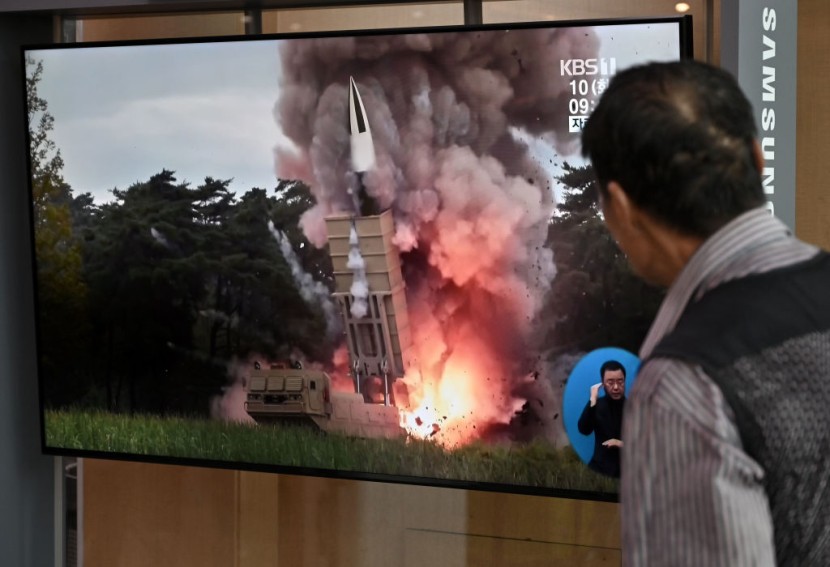
According to state news agency KCNA, North Korea fired tactical guided missiles on Monday, the latest in a string of recent tests that have highlighted the country's burgeoning missile programs amid stalled disarmament talks.
Two prior launches used "hypersonic missiles" capable of high speed and movement after lift-off while another test on Friday used two SRBMs launched from train carriages.
North Korea makes unusual sequence of missile launch
According to diplomats, the UN Security Council will meet behind closed doors on Thursday to discuss the ongoing missile launches. The proposal for a Council debate was submitted on Tuesday by the United States, the United Kingdom, France, Ireland, and Albania. North Korea fired two short-range ballistic missiles (SRBMs) from an airfield in Pyongyang on Monday, the South Korean military said. The missiles traveled around 380 kilometers (236 miles) and reached a maximum height of 42,000 meters (137,800 feet).
According to the official KCNA news agency, the Academy of Defense Science conducted a test of tactical guided missiles from the country's west coast, and they "precisely targeted an island target" off the east coast. The unusually quick run of launches has prompted US censure and a lobbying for more UN penalties while Pyongyang has threatened harsher measures, raising the possibility of a return to the 2017 "fire and fury" threats.
After a teleconference with his South Korean and Japanese counterparts, US Special Representative for North Korea Sung Kim urged Pyongyang to "stop its illegal and destabilizing acts" and begin talks, stating he was willing to meeting without preconditions.
South Korea's defense ministry said on Tuesday that it considers all North Korean missile launches a "direct and severe danger," but that its military can identify and intercept them, according to Reuters.
During a press conference, UN spokesperson Stephane Dujarric termed the North's tests "increasingly alarming," urging all parties to return to discussions to reduce tensions and pursue verified denuclearization of the Korean peninsula. In 2017, North Korea tested the Hwasong-12 intermediate-range ballistic missile (IRBM) at the Sunan airport, with leader Kim Jong-un in attendance.
Read Also : China's Birth Rate Hits Historic Low as Economic Growth Slows Despite Beijing's Effort To Tackle Dilemma
Pyongyang flauts new sanctions
Since 2017, North Korea has not conducted a test of its longest-range intercontinental ballistic missiles (ICBMs) or nuclear weapons, owing to a flurry of dialogue with Washington. However, following a failed summit in 2019, it began testing a variety of different SRBM designs. The most recent exam was skipped by Kim. It was a missile ascending into the sky atop a cloud of dust and spewing flame, according to a photo issued by KCNA, as per South China Morning Post.
According to Mason Richey, a professor at Hankuk University of Foreign Studies in Seoul, the pace of testing and the various launch sites suggest that North Korea has enough missiles to feel comfortable spending them on tests, training, and demonstrations and that this helps to reinforce its deterrent credibility by emphasizing the size of its missile force.
Since 2017, North Korea has not launched its longest-range intercontinental ballistic missiles (ICBMs) or nuclear weapons; but as denuclearization negotiations stagnated in 2019, it resumed revealing and testing a variety of new SRBM designs. Many of the most recent SRBMs, particularly hypersonic missiles, appear to be designed to circumvent missile defenses. North Korea has also stated that it will seek tactical nuclear weapons, perhaps allowing it to deploy nuclear warheads aboard SRBMs, Business World reported.
Related Article : North Korea Launches New Missiles in Response to US Sanctions; Booming Hacking Industry Reportedly Stole $400 Million in Cryptocurrency
@YouTube








